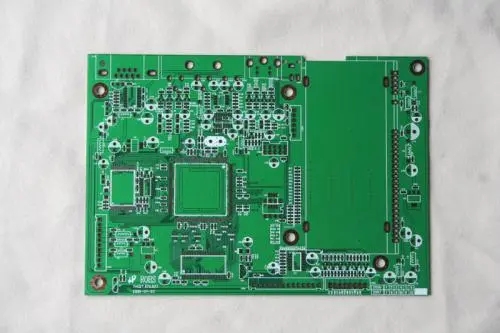Single-point grounding design methods and techniques in PCB design

PCB printed circuit board is very important to the design of signal grounding. If the grounding design is improper, the PCB circuit board will produce grounding noise and electromagnetic radiation during use, which will have a significant impact on the overall electrical performance of the product.
Therefore, the editor invited Benqiang circuit technology to introduce you to the design ideas of PCB printed circuit board grounding from single-point grounding, multi-point grounding, mixed grounding, analog circuit grounding, digital circuit grounding and many other aspects., Design methods and techniques. It can be said to be full of sincerity and a lot of dry goods.
Due to space limitations, today we will first talk about the design method of single-point grounding in the circuit board.
Single-point grounding connection means that the grounding circuit is connected to a single reference point during the design process of PCB products. The purpose of this strict grounding setting is to prevent the current from two different subsystems (with different reference levels) from passing through the same return path as the RF current, resulting in common impedance coupling.
When components, circuits, interconnects, etc. are all operating in the frequency range of 1MHz or lower, the use of single-point grounding technology is the best, which means that the influence of distributed transmission impedance is minimal. At higher frequencies, the inductance of the return path becomes non-negligible. When the frequency is higher, the impedance of the power plane and interconnection traces is more significant. If the line length is an odd multiple of the signal 1/4 wavelength (the wavelength is determined by the rising edge rate of the periodic signal), these impedances can become very large . There is a finite impedance in the current return path, a voltage drop will be generated, and an undesirable radio frequency current will be generated. This is particularly prominent in PCB high-frequency circuit boards.
Due to the significant influence of impedance at RF, these traces and ground conductors work like loop antennas, and the amount of radiated energy depends on the size of the loop. A curly loop, regardless of its shape, is still an antenna. For this reason, single-point grounding technology is usually no longer used when the frequency is higher than 1MHz. In Figure 1 below, two methods of single-point grounding technology are shown: series grounding and parallel grounding. Series grounding is a cascade chain structure that allows common impedance coupling between the ground references of each subsystem. This is unreasonable when the frequency is higher than 1MHz. This figure only draws the inductance in the grounding circuit, and distributed capacitance also exists in these three grounding circuits. When inductance and capacitance exist at the same time, resonance occurs. For this structure, there may be 3 different resonances.
Single point grounding method in PCB design
For series grounding, the total current through the final return path L 1 is I 1+I2+I3 The voltage of I1 (VA) and I 3 (V c) is not zero, but VA defined by the following formula =(I 1+I2+I3)ωL 1
Vc=(I 1+I2+I3)ωL 1+(I 2+I3)ω L2+(I 3)ωL 3
For this widely used structure, a large current will produce a voltage drop across the finite impedance. The voltage reference between the circuit and the reference structure may be sufficient to prevent the system from working as expected.
In the PCB circuit board design stage, the designer must pay attention to the hidden problems in the series grounding technology using single-point grounding. If there are multiple circuits of different power levels, this grounding technique cannot be used, because high-power circuits generate large ground currents, which will affect low-power devices and circuits. If this grounding method must be adopted, then the most sensitive circuit must be set directly at the power input location, and as far away as possible from low-power devices and circuits.
A better single-point grounding method is parallel grounding. However, there is a disadvantage of using this method, that is, because each current return path may have a different impedance, the ground noise voltage is aggravated. If multiple printed circuit boards are used in combination, or multiple sub-assemblies are used in a final product, then a certain circuit may be very long, especially if these lines are used in interconnection. These ground wires may also have a large impedance, which will damage the desired effect of the low-resistance ground connection.
When multiple printed circuit boards are connected in parallel in this way, it was thought that strict grounding would solve the problem, but it turns out that the product cannot pass the radiation test. Like the series connection, there are distributed capacitances from each circuit to the ground. When using this layout, the designer should make the inductance value of each return path to the ground approximately the same, although it is difficult to achieve in practice. In this way, the resonance between each circuit and the ground should be approximately the same, so that there will be no multiple resonances that affect the operation of the circuit. Another problem with using single-point grounding technology is radiation coupling. This phenomenon may occur between the wires, between the wires and the printed circuit board, or between the wires and the housing. In addition to RF radiation coupling, crosstalk may also occur, depending on the physical distance between the current return paths. This coupling may occur in the form of capacitance or inductance. The degree of crosstalk depends on the frequency range of the return signal, and the radiation of high-frequency components is more serious than that of low-frequency components.
Single-point grounding technology is commonly found in audio circuits, analog equipment, industrial frequency and DC power systems, and plastic-encapsulated products. Although single-point grounding technology is usually used at low frequencies, sometimes it is also used in PCB high-frequency circuit boards or systems. This application is feasible when designers are aware of all the inductance-related issues in different grounding structures. .